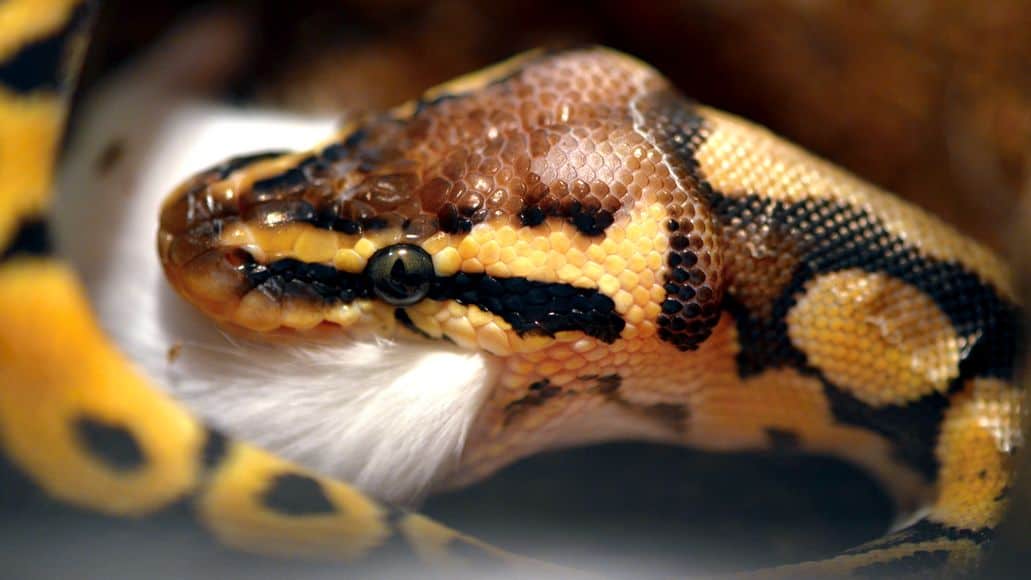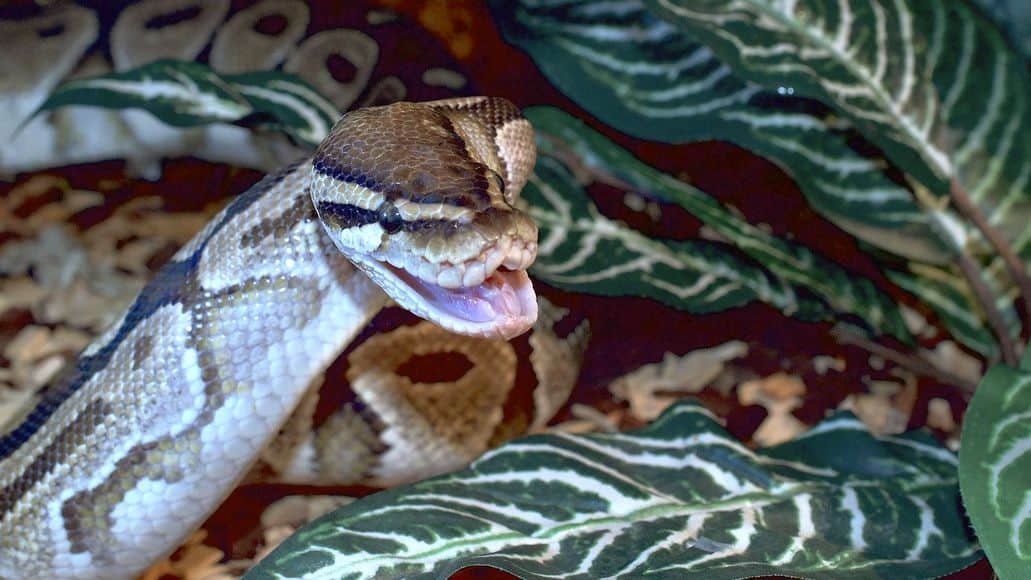
If you don’t already know how long a ball python can live, you are in for quite the surprise.
The average ball python lifespan is incredibly long in captivity.
Assuming you give them the proper care, of course.
We are going to cover how long you can expect your pet ball python to live, and about how long that is in human years.
We will also cover all of the important things you need to do for your snake to ensure it lives a long, healthy, and happy life.
Table of Contents
How Long Do Ball Pythons Live As Pets?
Ball pythons live 20 to 30 years as pets. Some even live up to 40 years with optimal care. In the wild, they typically live 10 to 15 years.
Factors contributing to a ball python’s longevity include a proper diet, habitat conditions, regular veterinary care, and a stress-free lifestyle.
How Long Do Ball Pythons Live In Human Years?

As mentioned, ball pythons can live 20 and 30 years in captivity, with some reaching up to 40 years under optimal care. This is equivalent to 80 to 120 human years. The longest-living captive ball python lived over 48 years.
In the wild, their lifespan is a lot shorter. They tend to only live around 10 to 15 years, mainly due to threats like predation and poor living conditions. This is comparable to 40 to 60 human years.
Factors like a proper diet, ideal habitat conditions, regular veterinary care, and low stress contribute significantly to their longevity.
How Old Was The Oldest Living Ball Python?
It is hard to believe but the maximum recorded age for a ball python was over 61 years. And the snake even laid eggs at this age!
Notably, some ball pythons have lived over 59 years at the St. Louis Zoo. These exceptional lifespans are rare and typically occur in captivity, where they benefit from consistent care, a controlled environment, and the absence of predators.
Regular veterinary check-ups for your ball python, a balanced diet, proper habitat conditions, and minimized stress are critical factors that contribute to such longevity.
These cases highlight the potential for ball pythons to live significantly longer than the average captive lifespan of 20 to 30 years when provided with optimal care.
How To Increase A Ball Python’s Lifespan
To keep your ball python healthy and increase its longevity, follow these tips.
Provide A Clean Habitat Of Sufficient Size

For young ball pythons, a 20-gallon tank (2 to 3 feet or 0.6 to 0.9 meters) is sufficient. Adult ball pythons need larger enclosures, around 4 to 6 feet long (1.2 to 1.8 meters) and 2 to 3 feet (0.6 to 0.9 meters) wide, to ensure they have enough space to move and explore.
Of course, larger than that is better. Failure to provide a large enough enclosure can stress your ball python and reduce its lifespan. This article reviews the best ball python enclosures.
Keep the enclosure clean by removing waste daily and disinfecting it monthly. Replace wet and moldy substrates regularly. This is necessary to prevent skin issues and other serious diseases that can kill your ball python.
Provide The Ideal Temperature and Humidity
Maintain the enclosure at a temperature of 75 to 80° F (24 to 27° C) on the cool side and 88 to 92° F (31-33°C) on the warm side. These snakes need both a cool side and warm side in their enclosures to allow them to regulate their body temperatures.
Ball pythons need humidity levels between 50 and 60%. These conditions are necessary to help your ball python maintain proper metabolic functions and hydration.
Provide The Right Food
Feed your ball python appropriately sized prey, usually rats or mice. The prey should be no larger than the widest part of the snake’s body. You should feed juvenile ball pythons every 5 to 7 days, while adults should eat every 10 to 14 days.
Live Vs Frozen Prey

Frozen prey that has been thawed before feeding is safer than live prey and can reduce the risk of injury to your snake from a live rodent. However, some ball pythons simply prefer live prey.
Your vet can guide you on whether feeding your pet live mice or rats is the best option. Live feeding can be more stimulating, but poses a risk of bites and scratches. Always supervise live feedings.
Irrespective of whether you feed it live or frozen, always provide fresh drinking water for your ball python.
Provide Mental Stimulation
Enrich your ball python’s environment with hides, branches, and climbing opportunities in the enclosure. Regularly rearrange the enclosure and introduce new objects to provide mental stimulation and prevent boredom.
Minimize Stress
Minimize stress by handling your ball python gently and infrequently. Provide a secure hiding spot in the enclosure where your snake can hide and feel safe. Avoid sudden changes in the environment or loud noises.
Monitor Its Shedding
Keep an eye on your shedding ball python to ensure the skin is not stuck anywhere, especially the eye caps. Incompletely shed skin can harbor bacteria and give rise to infections and diseases. Provide your snake with abrasive surfaces and proper humidity levels to help the shedding skin come off easily.
Learn To Read Your Snake’s Body Language

Learn to reading your ball python’s body language. Doing so can save your pet’s life. A relaxed and healthy ball python will move slowly and flick its tongue. It will have a healthy appetite too.
Signs of stress include hissing, striking, or staying in a defensive posture. A sick snake might be lethargic and refuse food. If you notice these signs, your snake could be sick or injured. Learn to understand these cues so you can adjust your pet’s care to meet its needs.
It is also a good idea to learn how to build a bond with your ball python. when you first get your new snake, you need to build trust so that it feels comfortable in your presence.
Provide Regular Veterinary Care
Schedule regular check-ups with a reptile veterinarian to monitor your ball python’s health. Regular vet visits can help detect and treat potential health issues early, contributing to your snake’s longevity.
How To Tell A Ball Python’s Age
Telling a ball python’s age accurately is challenging. While some believe that the snake’s size and shedding frequency indicate its age, these factors can vary with diet and environment.
Some people might advise you to estimate your ball python’s age based on its weight. Again, the snake’s weight is not an accurate indication of its age, since it can vary based on the snake’s feeding frequency, hatch weight, and overall health, etc.
The most reliable way to know a ball python’s age is from the breeder, if they know the hatch date. If the snake has been rescued or caught in the wild, determining its age precisely is not possible.

Ball Python Lifespan: Final Thoughts
Your ball python can live 20 to 30 years in captivity with proper care, including a suitable diet, optimal habitat conditions, and regular veterinary visits.
Some ball pythons have been known to live up to 40 years or more. In the wild, they typically live 10 to 15 years due to factors like predation and harsh environmental conditions. With dedicated care, your ball python can enjoy a long, healthy life.
Leave a Reply